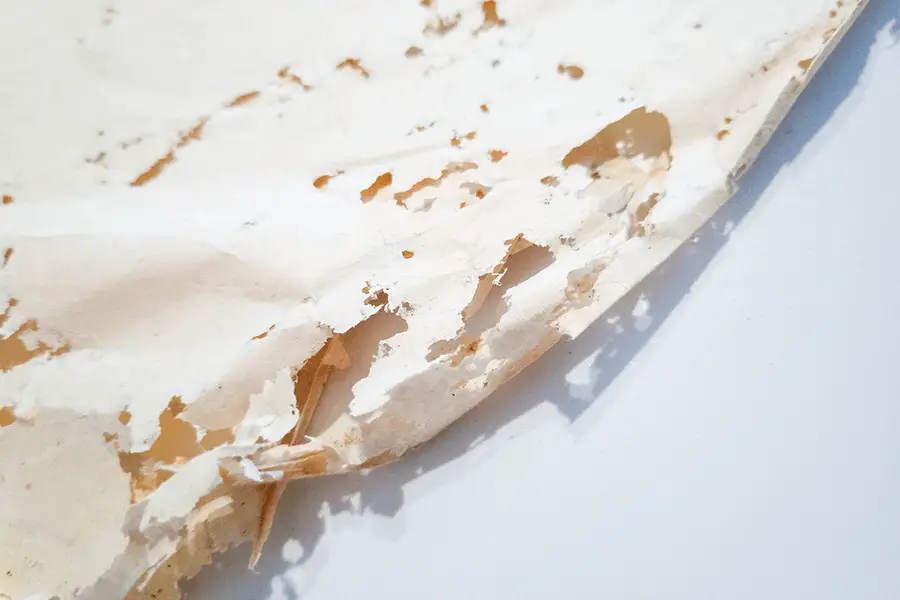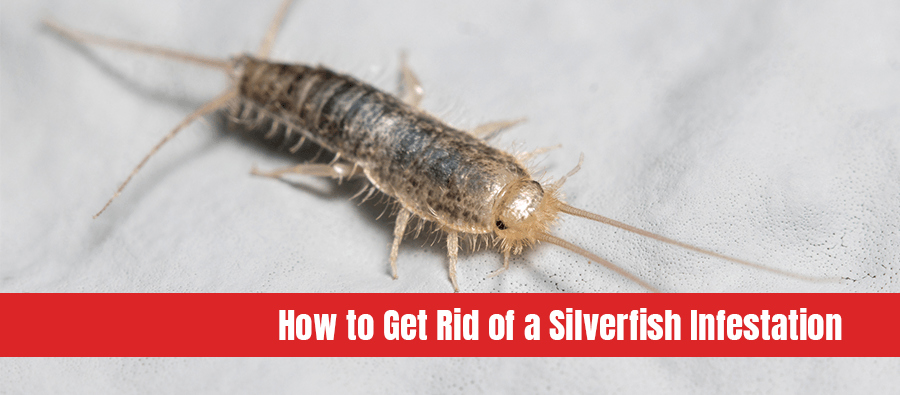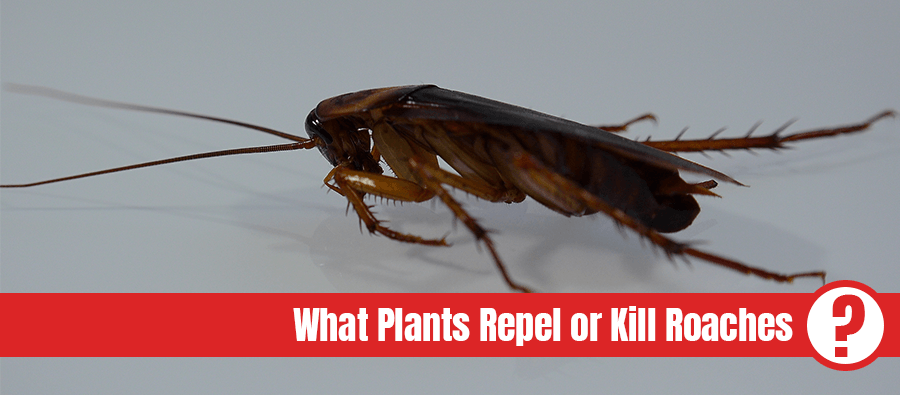Do you want to get rid of the silverfish flitting about your house all day and night? It’s important to find an effective and proven method to deal with a silverfish infestation. Silverfish not only reproduce very quickly, but they also tend to hide in the dark corners of your home.
So what are the best methods for getting rid of an infestation? We’ve scoured the web for some of the best strategies for preventing, repelling, and getting rid of silverfish from your home.
Whether you’re dealing with a few or many silverfish, the methods in this article will help you get their population under control. However, in order to get rid of silverfish entirely, it’s important to combine more than one method so that you not only get rid of the silverfish, but you also prevent them from coming back again in the future.
Table of Contents
How did silverfish get into my home?
Before we go over our top methods for getting rid of silverfish, it’s important to understand how and why these insects got into your home in the first place. You see, silverfish can get into your home through very small holes, gaps, and cracks which can be hard to spot. If you don’t have a proper door-sweep, for example, the gap under your door makes a great entry point for silverfish and other insects.
Silverfish can also find their way into your home from items you bring in from outdoors. Firewood and cardboard boxes make prime silverfish hiding places. Make sure to shake out anything that’s been sitting outside for a while so that you don’t bring any unwanted pests inside.

Silverfish like to live in dark, damp areas and feed off of sugar and starch; basically anything from paper to dust, grains, and more. Outside, you might find them hiding under a leaf pile. Inside, they might be munching away on a book, newspaper, or even your favorite tapestry!
Finally, silverfish love humidity, so you might even spot them in the laundry room, bathroom, or attic. Overgrown weeds growing along the walls of your house might also make a great home for silverfish to reproduce and eventually make their way inside.
Preventing a silverfish infestation
Whether or not you’re already dealing with a silverfish infestation, it’s important that you know how to prevent it in the first place so that you can avoid dealing with one in the future. Plus, although there are many strategies for getting rid of silverfish, these strategies won’t be effective in the long run if you don’t make your house an unfavorable environment. So as long as silverfish think they can live and reproduce in your house, they’ll keep on coming back!
As with most pest infestations, it’s very important to investigate the source(s) of the infestation. Follow the steps below to prevent a future infestation of silverfish in your home.

Remove silverfish food sources
The very first step to take when handling a silverfish infestation is getting rid of silverfish food sources. The easiest way to do this is to keep things tidy.
If you’ve seen signs of silverfish activity around your pantry or kitchen, it’s important to find ways to store your food items properly. Make sure to put starchy food like cereals, sugar, or flour in containers with sealable lids. Tie or seal up food materials in bags to keep silverfish out.
Remember, silverfish feed on paper, so a bag of flour or rice in the garage or pantry is a feast for silverfish if not sealed away!
You can also prevent silverfish by keeping the exterior of your home clean. Trim or pull weeds and keep wood piles away from the side of the house. Investigate for other potential food sources. Piles of clothes or paper materials that have been sitting out for a long time are perfect for silverfish.
Ultimately: keep your home tidy, pick up clothes off the floor, and store your books, magazines, and newspapers properly. The idea is to deprive the silverfish of food and starve them out of your space. Plus, these are just good practices anyway.

Clean your home regularly
Tidying up your food, clothing, and books is good, but that alone won’t keep out the silverfish. They can feed off dust even if there’s no other sources around! So another great step you can take to make your space less attractive to these pests is to clean your home regularly. This means vacuuming the floors as well as the corners, and dusting all surfaces every once in a while.
If you’re concerned about silverfish, it’s also a good idea to do a deep cleaning at least once a year. Especially attics and basements can be prime locations for silverfish if you don’t clean them very often.
Reduce the humidity in your home
Now that you’ve taken care of any potential silverfish food sources and given your home a good spring cleaning, it’s time to take a look at the humidity level.
Is your area or home particularly humid? Silverfish love humidity! So a higher humidity level is going to make it more likely that silverfish live in your home.
To tackle the humidity problem, first look for areas of high moisture in your home such as bathrooms and basements. Make sure there’s no leaks anywhere (fix them if there are) and examine other dark areas that might accumulate moisture. To reduce the humidity, make sure that there’s adequate ventilation. You can open up windows, run the AC, or even use a dehumidifier which can significantly help if your house is more humid.
Lowering the humidity in your home can significantly reduce the chances of a silverfish infestation.
Seal all holes and cracks
Silverfish can get quick access to your home through cracks and holes in your walls. Inspect the interior and exterior of your home for any cracks or crevices, and use caulk to seal them up. Make sure to pay extra attention to the areas around windows, doors, and the basement.
Making your home as unattractive as possible to silverfish is the best way to handle an infestation before it happens. However, if you’re already dealing with silverfish in your home, these methods won’t get rid of them entirely. To do so, you’ll need to attempt a combination of preventing, repelling, and killing the silverfish to get rid of them for good.
Natural silverfish repellents
The next step after you’ve done the work to prevent a silverfish infestation is to repel them from your space. Especially when silverfish are already in your home, using natural silverfish repellents can help reduce the population and make it easier to deal with an infestation. There are many natural pest control methods out there, but we’ve listed our favorites for silverfish control here.
Cedar oil and wood shavings
Cedar oil and shavings are one of the most popular and effective all-natural pest control methods. You can use either cedar essential oil or cedar wood shavings to repel silverfish from your home. For best results, mix the cedar oil with warm water, put it in a spray bottle and spray directly on and around the areas where you’ve noticed signs of silverfish activity.
When using cedar shavings as a silverfish repellent, simply sprinkle the shavings in the infested area of your home and/or property. You probably want to limit using cedar shavings to areas like the basement and outdoor areas, as it can be a bit messy. Make sure to vacuum, clean, and replace this treatment in the areas you’ve applied it to at least weekly until you stop seeing silverfish in your space.
Use dried bay leaves and other strong-scenting spices
There is another all-natural, organic, and non-toxic method of handling silverfish infestation. Silverfish hate the smell of bay leaves and other strong-smelling spices like cinnamon and cloves. So you can get some dry bay leaves, leave them around the areas where you notice signs of silverfish, and wait for the silverfish to disappear!
You can use other strongly scented herbs and spices around your kitchen cabinets or pantry to repel silverfish, like cinnamon sticks, whole cloves, or sachets filled with dried rosemary. Make sure to replace the spices as they start to lose their scent.
While these strong-smelling herbs and spices will not kill silverfish directly, they’ll help you by repelling them from your home.

Make citrus or lavender spray
As with strong spices, silverfish don’t like the smell of citrus and lavender. If you’re looking for an all-natural way of repelling these insects, essential oils like citrus and lavender can work wonders. Because of their strong scent, citrus or lavender spray can help keep silverfish out from specific areas of your home where you apply it.
If you’re considering this method, simply get some lavender or citrus essential oil, dilute it with water, and shake the mixture up in a spray bottle. Make sure to spray it in areas where you’ve noticed silverfish activity and where you want to repel them preventatively. These sprays are great options for areas of your home like the closet, bathroom, or laundry room since they’ll leave a nice scent.
This method works best in combination with other methods that will get rid of silverfish from your home.
How to get rid of silverfish
If you have a silverfish infestation in your home, preventative and repellant methods are important, but they’re not going to be enough to get them out for good. Luckily, getting rid of a silverfish infestation is not particularly difficult! If you use a combination of methods from this article, you should be free of silverfish in no time.
There are several options for getting rid of silverfish effectively, ranging from non-toxic methods to silverfish poisons. While poison can be effective, it should be your last resort. Always consider the safer, eco-friendly alternatives first, especially if you have kids or pets in your household. Let’s get to it!

Put sticky traps around your house
Putting sticky traps around your home (particularly areas where you’ve noticed silverfish activity) is one of the easiest ways to get rid of silverfish. There are different types of sticky traps available in most home and garden stores or online. Sticky traps are effective, inexpensive, and non-toxic.
Simply get a few sticky traps and position them in areas of your home where you’ve previously noticed silverfish activity. These traps attract and trap the pests until they die, significantly reducing your silverfish infestation.
Check your traps every few days and properly discard the ones that have insects stuck to them. If you have little kids or pets in your home, make sure to place the traps underneath furniture when possible, or try another method first.
Make a DIY silverfish trap
Silverfish hide out in dark corners, but you can trick them out of those corners with what they love to eat: starchy foods.
To make a DIY silverfish trap, simply put some starchy food like cereal or flour in a container such as a glass jar. Leave it open and wrap the outer surface with tape. The tape helps the silverfish get into the glass, but they won’t be able to get out due to the smooth surface of the glass on the inside.
An ideal spot to place your trap would be where the silverfish normally find food in your home; for example, a book rack or pantry. The location of your trap is very important so you get the quick result that you desire. Empty the jar outside or in the trash when it’s accumulated several silverfish.
Trap silverfish with newspaper
You might be skeptical of newspapers as a silverfish trap, but trust us, it’s worth a try!
Remember, silverfish will consume and hide out in paper materials such as books and newspapers. To make a newspaper trap, take a newspaper, make it wet, and roll it up. Place the damp newspaper in an area of your home where you’ve seen silverfish activity.
In a few days, the silverfish will have crawled into the wet newspaper to make it their new home. You don’t want another silverfish den in your home, so simply remove the newspaper during the day and place it in a sealable, airtight bag and toss it in the trash. Alternatively, you can burn it.
Use boric acid for a serious silverfish infestation
Boric acid is a commonly used substance for silverfish control, as it gets rid of both silverfish and their eggs. You can find boric acid in stores that sell household cleaning products. It’s best used when you’re sure of the location of the silverfish in your home.
To use this method, put the boric acid in a spray bottle and spray a thin layer on the affected area. Alternatively, you can create a diluted boric acid solution using water and use this directly on areas like holes, cracks, cupboard areas, and bookshelves where silverfish hang around. It’s also an effective solution for basements and attics.
Boric acid works effectively for intense silverfish infestation, but it’s advisable to stay away from the space where you’ve used boric acid for a while. It’s a harsh, toxic substance, so be careful not to inhale boric acid. And of course, don’t apply boric acids in areas of your home where kids or pets could run into it.
Use a borax solution
An alternative to boric acid is borax. Borax is a cleaning powder often found in laundry products, but it’s a very effective method for getting rid of silverfish. You can buy borax from most stores that sell laundry detergents. To get rid of silverfish with borax, sprinkle a thin layer of the white powder around the areas where you’ve noticed silverfish activity.
Fortunately, you can use this method to kill silverfish in the hidden areas of your home like the holes, cracks, beneath the furniture or appliances, and behind the cabinets. But you’ll need to reapply this treatment regularly since wet or diluted borax is not as effective. Although generally a safer alternative to boric acid, you may want to avoid using it if you have pets and kids in your home.
Sprinkle diatomaceous earth (DE) around silverfish hideouts
Diatomaceous earth is considered a generally safe method of silverfish control, but make sure to use food-grade diatomaceous earth especially if you have pets and kids around. It’s an effective, all-natural, and non-toxic method to kill silverfish around your home.
Sprinkle food-grade DE in the dark areas around your bookshelves, closets, cabinets, or anywhere you’ve noticed silverfish. Once these insects come into contact with the DE, their outer coating will dry out and they’ll eventually die.
As with the borax method, you’ll need to reapply diatomaceous earth regularly to get the best results. Also, make sure to put on a mask while handling diatomaceous earth. Although the powder is non-toxic, you don’t want to inhale too much of it.
Pesticides can be a very effective method of control for larger infestations, but they should only be used as a last resort and only after you’ve tried several other methods.
When looking for effective pesticides, look out for a pesticide that contains pyrethrin, bifenthrin, or phenothrin. These substances are very effective against silverfish. You can opt for conventional application methods such as foggers, bombs, or sprays that contain any of the above-mentioned ingredients.
To apply pesticides, make sure to follow the instructions on the packaging. Apply the pesticide directly into cracks and along the baseboards. Don’t apply pesticides around food, and make sure that any kids and pets are out of the way.
Pesticides are highly toxic, so you may want to consider professional pest control to reduce the health risk.

When do I need professional pest control for a silverfish infestation?
We hope that this comprehensive guide has given you the information you need to get rid of a silverfish infestation, and to make sure that you don’t get one in the future. There are many effective methods that you can use, but in most cases it’s best to use a combination of at least 2 or 3 different methods for the best results.
For areas like the kitchen and bedroom, you want to stick with the milder, more natural methods to avoid exposing yourself or others to harsh chemicals.
But when do you need a professional to take care of a silverfish infestation instead?
If you have a serious silverfish infestation that can’t be handled with these methods alone, you may want to hire professional pest control so that they can effectively get rid of the silverfish. They are experienced with using harsh chemicals and toxins, and will do so in a way that leaves your house safe for you and your pets or kids. Professional pest control is generally a good option if you’re considering pesticides, so that you can avoid handling these chemicals whenever possible.
When you call in a pro, they will do a thorough inspection of your entire home inside and outside to determine where the infestation is worst. They can handle the infestation using whatever methods best suit the situation, and they’ll also offer you advice for the future so you can make sure it doesn’t happen again.
Ultimately, this kind of decision is up to you. If you don’t have a big silverfish infestation, it could be enough to use a combination of the methods we’ve laid out for you in this article. But if the infestation is severe or if these methods are not working for you, a professional pest control company can help you get rid of the silverfish for good.





